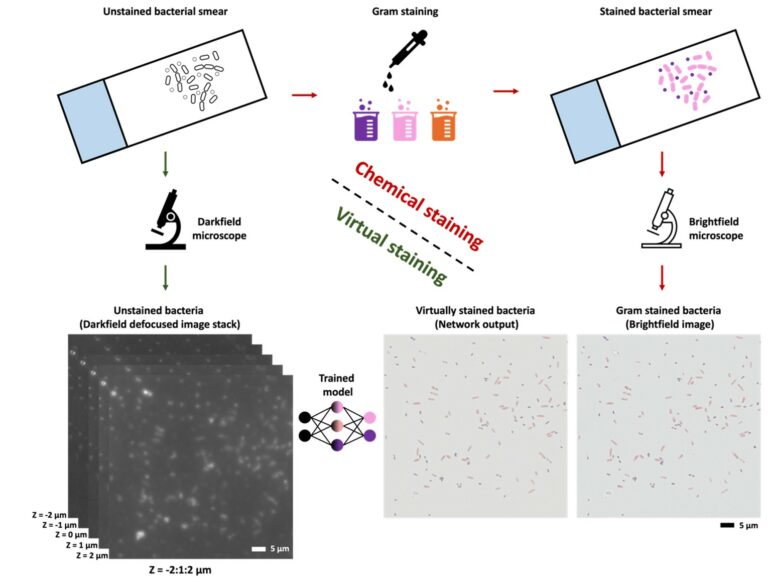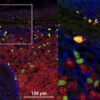A team of researchers at the University of California, Los Angeles (UCLA) has introduced a virtual Gram staining technique that could transform how microbiologists stain and classify bacteria. This new technology uses artificial intelligence to convert microscopic images of unstained bacteria into their Gram-stained equivalents, bypassing the traditional chemical staining process. The findings are published in the journal Science Advances.
Gram staining has been a cornerstone of microbiology for over a century, and it is a laboratory method used to differentiate bacterial species into two large groups (Gram-positive and Gram-negative) based on the chemical and physical properties of their cell walls.
The research, led by Professor Aydogan Ozcan of UCLA, represents a significant advancement in bacteria differentiation methods. Their work addresses long-standing challenges in conventional Gram staining, including inconsistency due to operator errors and chemical staining variations.
The system employs darkfield microscopy to capture high-resolution images of unstained bacteria, combined with deep learning technology to virtually transform these images into their Gram-stained equivalents. A trained neural network model processes a 3D axial stack of darkfield microscopy images, rapidly processing the 3D optical scattering information of bacterial cells to digitally stain label-free bacteria, matching the traditional Gram staining results.
“Traditional Gram staining, while fundamental to microbiology, has limitations that can impact diagnostic accuracy,” explained Dr. Ozcan, the study’s corresponding author. “Our virtual staining approach eliminates these variables, providing consistent, rapid results without the need for chemical reagents or manual processing of samples performed by microbiology experts.”
The team demonstrated the technology’s effectiveness using bacterial samples containing both Gram-positive and Gram-negative bacteria (Listeria innocua and Escherichia coli). The virtual staining results showed high accuracy when compared to the traditional Gram staining method, with the added benefits of reproducibility and standardization.
This virtual Gram staining technology offers numerous advantages for clinical laboratories, research facilities, and educational institutions. The system enables rapid bacterial differentiation without requiring any chemical processing steps, significantly streamlining microbiology analysis workflow. By eliminating manual staining procedures, it ensures highly consistent results that are free from operator-dependent variations, addressing a major limitation of traditional Gram staining methods.
Furthermore, this technology substantially reduces operational costs by eliminating the need for human expert time and staining reagents and materials, making it an economically attractive solution for microbiology facilities of all sizes. This combination of speed, reliability, and cost-effectiveness makes the system particularly valuable in settings where quick and accurate bacterial classification is crucial for diagnostic decision-making. In addition to Gram staining, the technology could potentially be adapted for other types of microbiological staining techniques and integrated into automated diagnostic systems.
A particularly promising future direction is the potential for real-time analysis and label-free staining of live bacteria. Unlike traditional Gram staining, which requires fixing bacteria, this virtual staining approach uses darkfield microscopy that can work with living organisms without the need for any labels. Microbiologists could use this capability to study label-free bacteria to reveal, for example, their growth patterns and responses to antibiotics in real-time without disrupting the microorganisms’ natural state.
The research was conducted by an interdisciplinary team from UCLA’s Electrical and Computer Engineering Department, Bioengineering Department, and California NanoSystems Institute (CNSI) in collaboration with researchers from Texas A&M University’s Department of Biomedical Engineering, and UCLA’s Department of Pathology and Laboratory Medicine at the David Geffen School of Medicine.
More information:
Çağatay Işıl et al, Virtual Gram staining of label-free bacteria using dark-field microscopy and deep learning, Science Advances (2025). DOI: 10.1126/sciadv.ads2757
Provided by
UCLA Engineering Institute for Technology Advancement
Citation:
AI-powered staining in microbiology: Researchers introduce virtual Gram staining of label-free bacteria (2025, January 9)



